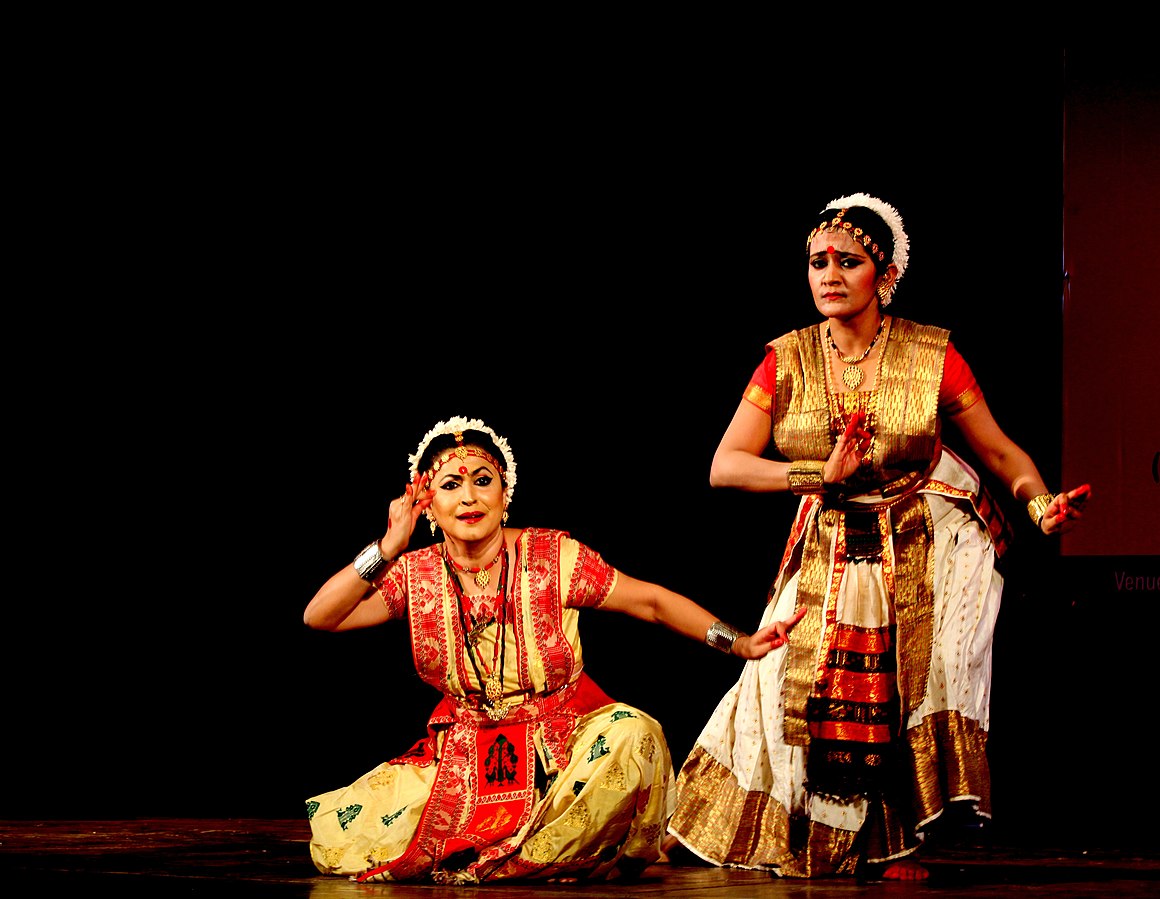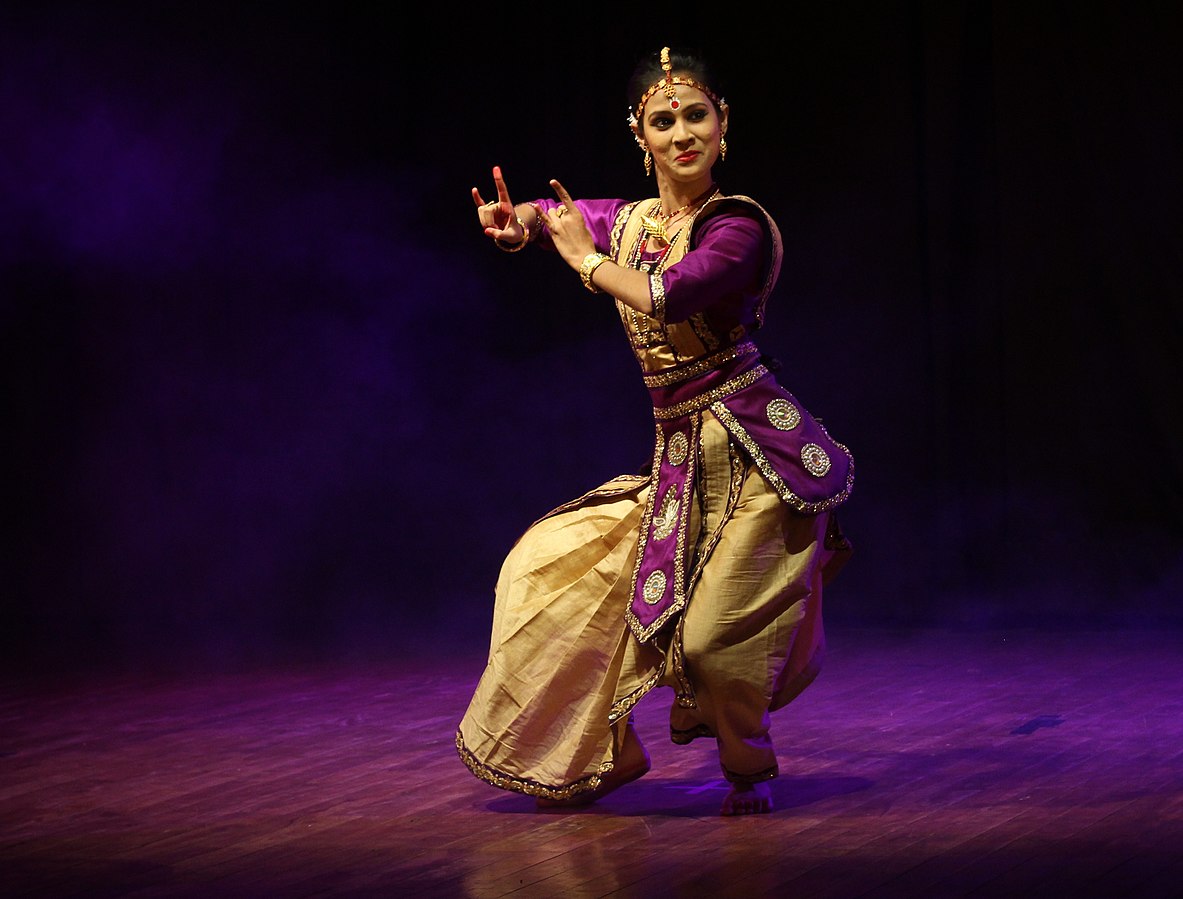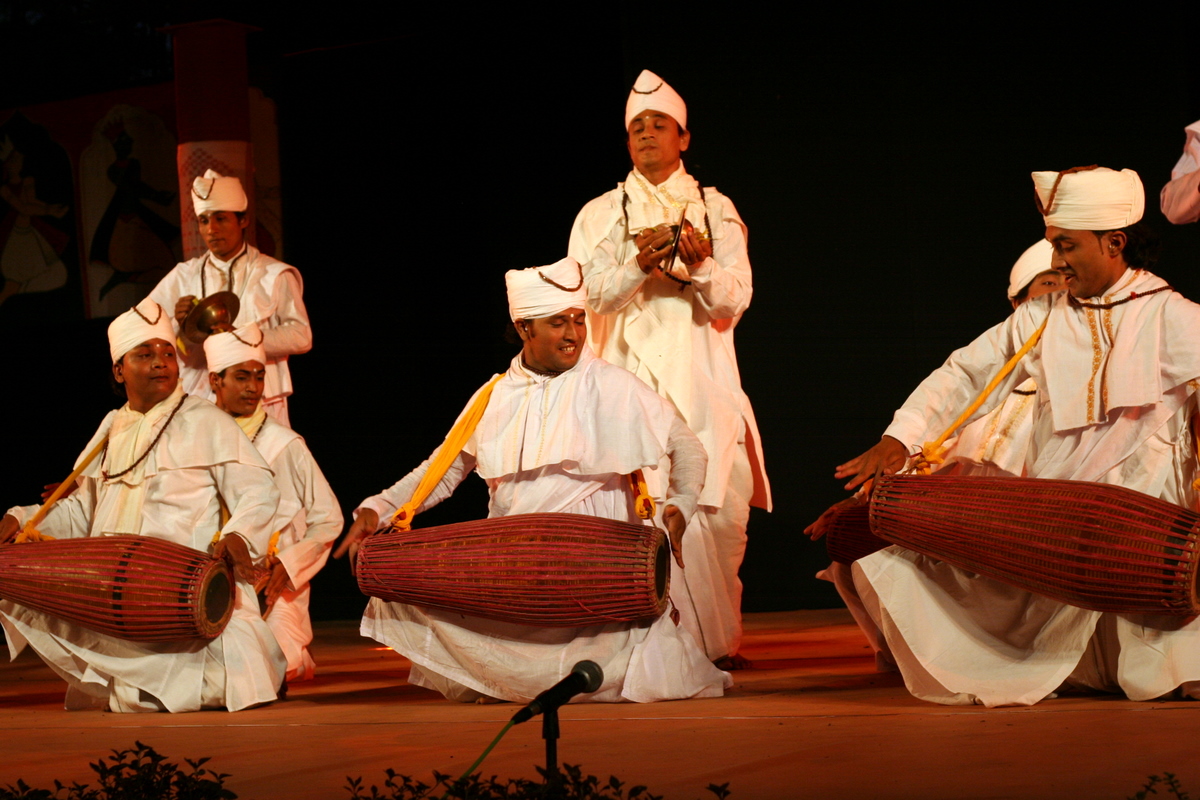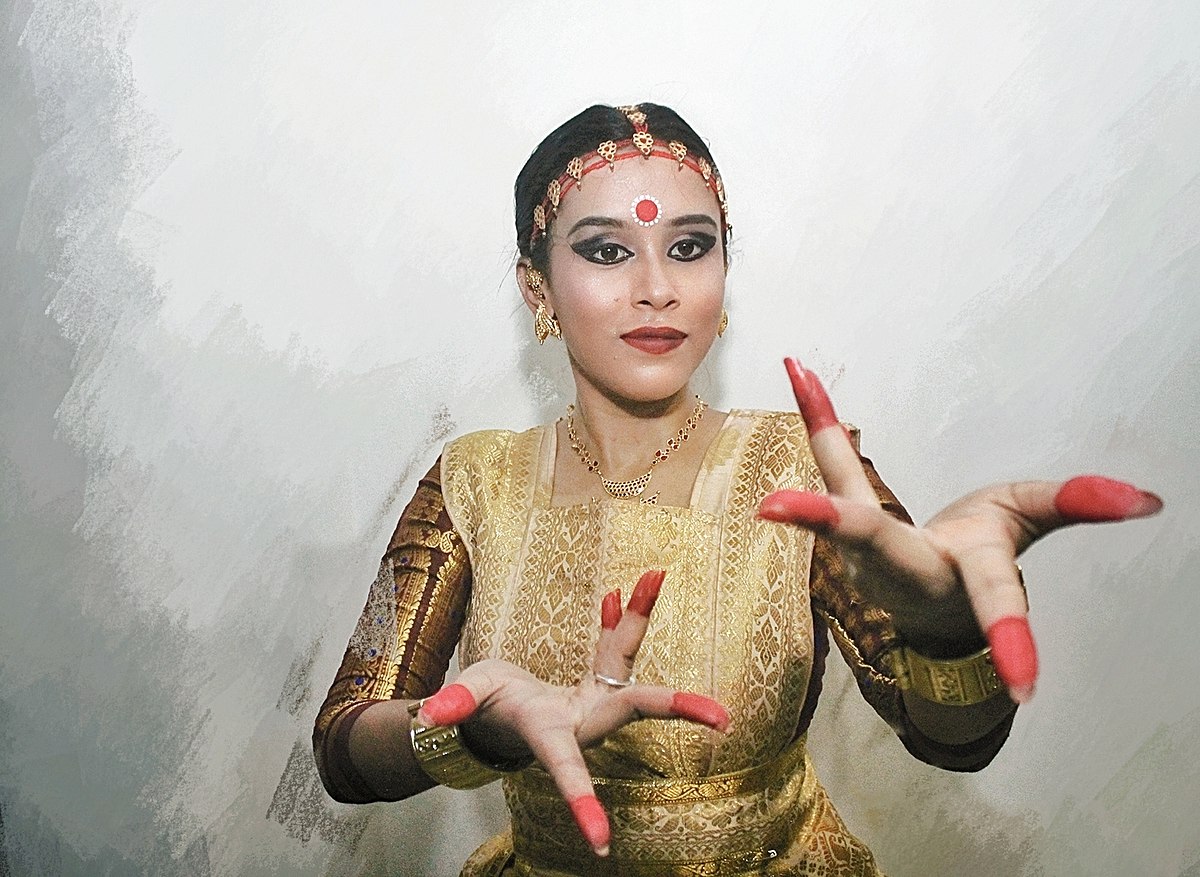- 168 views
Sattriya Dance of Assam
The Sattriya dance of Assam, one of the eight classical dance forms of India, holds a unique place in the cultural tapestry of North-East India. Deriving its name from the ‘satras’ (Vaishnavite monasteries) of Assam, Sattriya dance is not just a dance form, but a vibrant expression of devotion, spirituality, and tradition. Its rich history, intricate techniques, and profound cultural significance makes it an exemplary intangible cultural heritage of India.

Sattriya dance.
Image source: Shutterstock
The Sattriya dance emerged in medieval Assam around the 15th century as part of the neo-Vaishnavite Bhakti movement that was spearheaded by Mahapurush Srimanta Sankardev, the exemplary social reformer and Vaishnavite saint of Assam. It was Srimanta Sankardev and his principal disciple, Sri Sri Madhavadev, who had established the satras all over Assam and these monasteries became important centres for the evolution of new forms of art, besides being hubs for fostering a Vaishnavite religio-cultural order. Srimanta Sankaradev’s contributions to the field of performing arts remain unparalleled. Significant among these include the conceptualisation of Ankiya Naats (plays), Borgeets (devotional songs), Bhaonas (theatrical acts), and Sattriya style of dance. He developed this dance style to propagate the Vaishnavite theological doctrine among the common people. Thus, with time, Sattriya dance became a crucial part of the region’s neo-Vaishnavite worship system.

Abhinaya (emotive facial expressions) in Sattriya dance.
Image source: Wikimedia Commons.
The Sattriya dance was originally practiced solely by male bhokots (monks), and its performance was strictly limited to the confines of the satras. The dance was an essential component of the satra’s everyday worship routine, and it was also performed during special occasions. As a classical dance, Sattriya possesses a specific grammar and structure characterised by distinctive body movements, hand gestures, and footwork. While the art of Abhinaya (emotive facial expressions) in this dance form is rooted in Indian classical aesthetic treatises like the Natyasastra, Abhinaya Darpana, and Srihastamuktavali, it also manifests deep influences from local and indigenous cultural expressions. The mythic-spiritual enactments of Sattriya dance revolve around Vaishnavite themes such as the Dasavatara (ten incarnations) of Vishnu, activities of a young Krishna, and stories based on the lives of Lord Krishna and Lord Ram. In essence, Sattriya dance celebrates the eternal grace of Lord Vishnu and the very act of performing the artform becomes a medium of practicing bhakti (devotion) towards God.

Krishnasaramukha, a hand gesture depicting Lord Krishna playing the flute.
Image source: Wikimedia Commons.
A unique blend of song and dance performed by the dancers, singers (gayan) and instrumentalists (bayan) characterises a Sattriya performance. The Sattriya dance can be categorised into two styles: 'Paurashik Bhangi' or masculine style involving more energetic gestures and leaps, and 'Stri Bhangi', a feminine style characterised by more delicate gestures and poised feminine movements. Some of the primary dances within the scope of Sattriya include the Sutradhari Nach, performed by the sutradhar or conductor/storyteller; Krishna or Rama Nach, depicting Lord Krishna or Ram; and Gopi Nach, showcasing the gopis or milkmaids of Vrindavan. Additionally, there are other dances such as Rasar Nach, inspired by the Rasa-Lila of Krishna; Yuddhar Nach, a combat dance featuring bows, arrows, or clubs (gada); Jhumura, a group dance accompanied by singing but without expressive gestures (abhinaya); and Chali Nach, which emphasises intricate footwork.

A troupe of Sattriya performers playing the khol and taal.
Image source: Wikimedia Commons.
A distinct literary language called Brajawali was deployed by Sankardev and his disciple, Madhavdev, to compose several Vaishnavite devotional songs and plays. A combination of Assamese and Maithili, Brajawli is also used in Sattriya songs along with intervening Sanskrit verses. The musical instruments traditionally used during the performance are the ‘khol’ (two-sided drums), the ‘taal’ (cymbals) and the flute. In modern times, the violin has also been incorporated in the music of Sattriya performances.

A female costume made of Assam Pat silk and comprising of traditional Assamese jewellery: Kopali on the forehead, Muthi Kharu (bracelets), Thuka Suna (earrings), Golpata, Lokaparo, Senpota and Bena (necklaces).
Image source: Wikimedia Commons.
Sattriya dancers use elaborate costumes, each with unique features. While female dancers wear the traditional Chadar (upper garment), Ghuri (lower garment), and Kanchi (waist cloth), male dancers generally wear the traditional Dhoti (lower garment), Paguri (turban), and Chadar. Conventionally, the female costumes are of white or a distinct off-white raw silk colour with designs of red, blue or yellow for specific thematic dances. However, other brilliant colours are also used in the female costumes. The two premium varieties of Assamese silk—paat and muga—are most often used in preparing the dance costume. Traditional Assamese jewellery features prominently in Sattriya dance. Such jewellery is typically crafted by a unique method using raw gold, locally known as “Kesa Xon.”

A traditional outfit for male Sattriya dance performers.
Image source: Wikimedia Commons.
During a Sattriya performance, stories and emotions are conveyed using a variety of hastas (hand gestures) and facial expressions. These gestures are often similar to those of other classical Indian dance forms like Kathakali, Odishi, Manipuri, and Bharatnatyam, among others. Each gesture has a symbolic meaning and enhances the performance's storytelling component. For example, the ‘Alapadma Hasta’ depicts a blooming flower during the dance performance, while ‘Samput’ implies solemn rumination or even anger.

Alapadma Hasta is a hand gesture used in Sattriya dance.
Image source: Wikimedia Commons.
In spite of its strict grammatology rooted in ancient Indian treatises on the arts, Sattriya dance has shown tremendous adaptability over the centuries. In fact, for more than five centuries, Sattriya dance was entirely a masculine affair, with men performing both the male and female roles during a performance. It was only in the second half of the 20th century that there was a surge in female Sattriya dance performers, and male gurus were willing to train female disciples in the art of Sattriya dance to propagate this sacred artform among a much wider populace. In recent times, Sattriya dance has moved beyond the precincts of the satra and is now performed during religious ceremonies as well as on secular occasions. The dance form was recognised as one of the eight official classical dance forms of India by the Sangeet Natak Akademi in the year 2000.

A Bayan (instrumentalist) bows down after a Sattriya dance performance.
Image source: Wikimedia Commons.
It is this spirited tenacity to evolve that has allowed Sattriya dance to emerge as a leading performing art in India today with a large national and international audience. By fusing aspects of Vaishnavism with regional cultural expressions, Sattriya dance has emerged as an outstanding living tradition of Assam over the last six centuries. Through its artistic and devotional elements, Sattriya dance thus embodies the profound connection between art, spirituality, and humanity.
 Government of India
Government of India

 Recognizing the ongoing need to position itself for the digital future, Indian Culture is an initiative by the Ministry of Culture. A platform that hosts data of cultural relevance from various repositories and institutions all over India.
Recognizing the ongoing need to position itself for the digital future, Indian Culture is an initiative by the Ministry of Culture. A platform that hosts data of cultural relevance from various repositories and institutions all over India.